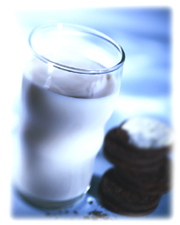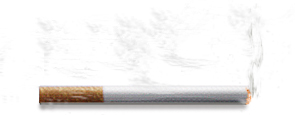|
 |
|
|
 |
|
The Silent Thief |
 |
|
The Silent Thief

If you smoke, hate milk and veggies, and drink a lot of coffee, you are at risk of developing brittle bones - osteoporosis - in your middle age. eknowhow medical checks out how you can protect yourself.
Trina Lee
Physiotherapist
What's Osteoporosis?
Osteoporosis is called the silent thief because calcium is stealthily robbed from its bank, the bones, leaving them poorer in calcium as you age. Calcium is necessary for building strong bones in childhood, maintaining bone mass in adults and reducing the risk of fractures, as a person grows older. Robbed of calcium, the bones become more brittle, and you are at higher risk of fractures of the vertebrae, hip and wrist.
Two Survivors
Take two real-life examples:
|
Case 1:
Mrs Jansen, age 60, is a thin lady with a small frame. She is a smoker and has had bronchitis for the last two years. She stays at home mostly, but sometimes goes out to play mahjong with her friends. She leads a sedentary life and does not exercise. As a young child, she has not been accustomed to drinking milk or eating any dairy products.
One day, she has a violent cough from the bronchitis and suddenly feels a sharp jab of pain in her back, which hurts when she breathes. The pain is so severe that she has to go to the doctor. The doctor gives her painkillers and reports that the X-ray reveals that she has crushed vertebrae in the lower part of her spine and that it will heal on its own. A week later, the pain subsides considerably and within 3 months the pain is gone completely. A year later, she is walking to the toilet and has a mild slip. At the same time, she hears a crack in her left leg and is unable to take a step on that leg due to intense pain.
At the hospital, X-rays reveal a fractured hip and she needs surgery to repair it. Owing to her poor lung condition and slow recovery at the hospital, she develops pneumonia and her hospital stay is prolonged. |
|
Case 2:
 Mrs Da Silva, aged 72, is a rather robust and fit-looking lady for her age. She leads an active life, going on walks every morning and volunteering at the nursing home. As a child, her mother always made her drink a cup of milk a day, eat lots of cheese, yoghurt, tofu, bok choy and beans and even now, she still has the same diet. Mrs Da Silva, aged 72, is a rather robust and fit-looking lady for her age. She leads an active life, going on walks every morning and volunteering at the nursing home. As a child, her mother always made her drink a cup of milk a day, eat lots of cheese, yoghurt, tofu, bok choy and beans and even now, she still has the same diet.
One day, on her way to the old folk's home on foot while she is crossing the road, a car turns the corner and knocks her into the drain. The driver apparently, looking out for traffic did not notice her crossing the road.
Mrs Da Silva, a little stunned and shaken, picks herself up and decides to continue on her way to the home. The driver, sorry that he had hit an old lady asks if he could take her to the hospital emergency department. Feeling a few bruises and aches coming on, she decides to accept his offer.
At Accident & Emergency, the doctor is pleased to inform her that she has no fractures and is free to go home. |
Invest In Your Bone Health
See if you can pick out the factors leading to osteoporosis in Case 1 and the factors that prevented osteoporosis in Case 2.
From the case studies, there are two kinds of factors that predispose you to developing osteoporosis: those you can control and those you can't.
 Factors that you have no control over are: Factors that you have no control over are:
- Being aged 50 and older for women, and being aged 65 and older for men.
- Having passed menopause (when decreasing levels of oestrogen causes progressive bone loss) if you are a woman
- Having a family history of osteoporosis
- Being thin, small-boned
- The excessive use of certain medications such as cortisone, prednisone, thyroid hormone, heparin for the treatment of certain medical conditions
Factors that you do have control are: - Your calcium intake. Adequate levels range between 1000mg to 1500mg. If not, you may need a calcium supplement.
-
Exercising - Try to walk, jog, dance, play games as often as you can, preferably have some form of physical activity daily. The physical impact on your bones and joints, as well as muscles tugging on your bones to bring about movement, helps to increase and maintain good bone strength. -
Your Vitamin D intake. Limited exposure to sunlight or insufficient Vitamin D in your diet can reduce the intake of calcium in your digestive system. -
How much you smoke - If you are smoking, stop. Smoking contributes to bone loss. -
How much you drink. Drink in moderation. Alcohol is toxic to the cells which form new bone and which act to constantly renew and remodel the existing bone.
 These are lifestyle factors that need to be present during childhood, adolescence and maintained throughout life. For a woman, they are an invaluable investment. They ensure that her bones stay strong and dense during menopause - where she will spend one-third of her life - she has a good supply of bone material to start with. These are lifestyle factors that need to be present during childhood, adolescence and maintained throughout life. For a woman, they are an invaluable investment. They ensure that her bones stay strong and dense during menopause - where she will spend one-third of her life - she has a good supply of bone material to start with.
She won't risk losing as much bone as the woman in Case 1. The woman in Case 2 is much less likely to develop osteoporosis because of her strong bone history and especially if she continues with the same lifestyle.
The Menopausal Disadvantage
Oestrogen production decreases when the menstrual cycle is disrupted. Even for short periods, this can greatly reduce her maximum bone strength so that by the time she reaches menopause she will be greatly disadvantaged.
It is important to note that osteoporosis is not an inevitable disease of ageing. If you haven't given any thought to calcium, or exercise or hormone therapy to replace your oestrogen levels, it is never too late to start. Better late than never. Your bones will be thankful for the care you give them and you may or may not notice it, but you will have made a good investment on your calcium shares.
|
Young Women At Risk
Young women can be at risk of developing osteoporosis if: -
they have had irregular periods. -
they have missed periods caused by an eating disorder, starvation, or intensive physical training.
|
|
Bone Health In Menopause
As you get older you can reduce bone mass loss by taking calcium supplements, having a proper diet and doing weight-bearing exercise. However, these measures alone may not be enough, as oestrogen is also needed to maximise calcium metabolism and absorption. Thus, hormone replacement therapy (HRT) can play an important role in keeping your bones strong and reducing your risk of osteoporosis. |
|
What You Can Do To Prevent Osteoporosis -
Begin HRT at menopause and remain on it for as long your General Practitioner recommends. HRT protects your bones only as long as you remain on the therapy; if you stop treatment, bone loss will continue. -
Eat calcium-rich foods. If you cannot get enough calcium in your diet, you may need to take supplements. Ask your doctor for more information and advice. -
Do weight-bearing exercises, such as walking, aerobics and stair climbing, to strengthen your bones. Strength training can also help prevent bone loss. Talk to your doctor about an exercise programme that is right for you. -
Cut down on smoking and alcohol, which can affect bone density.
|
Date reviewed: 10 May 2005
|
 |
| |
 |
|
|
 |
 |
|
|
|